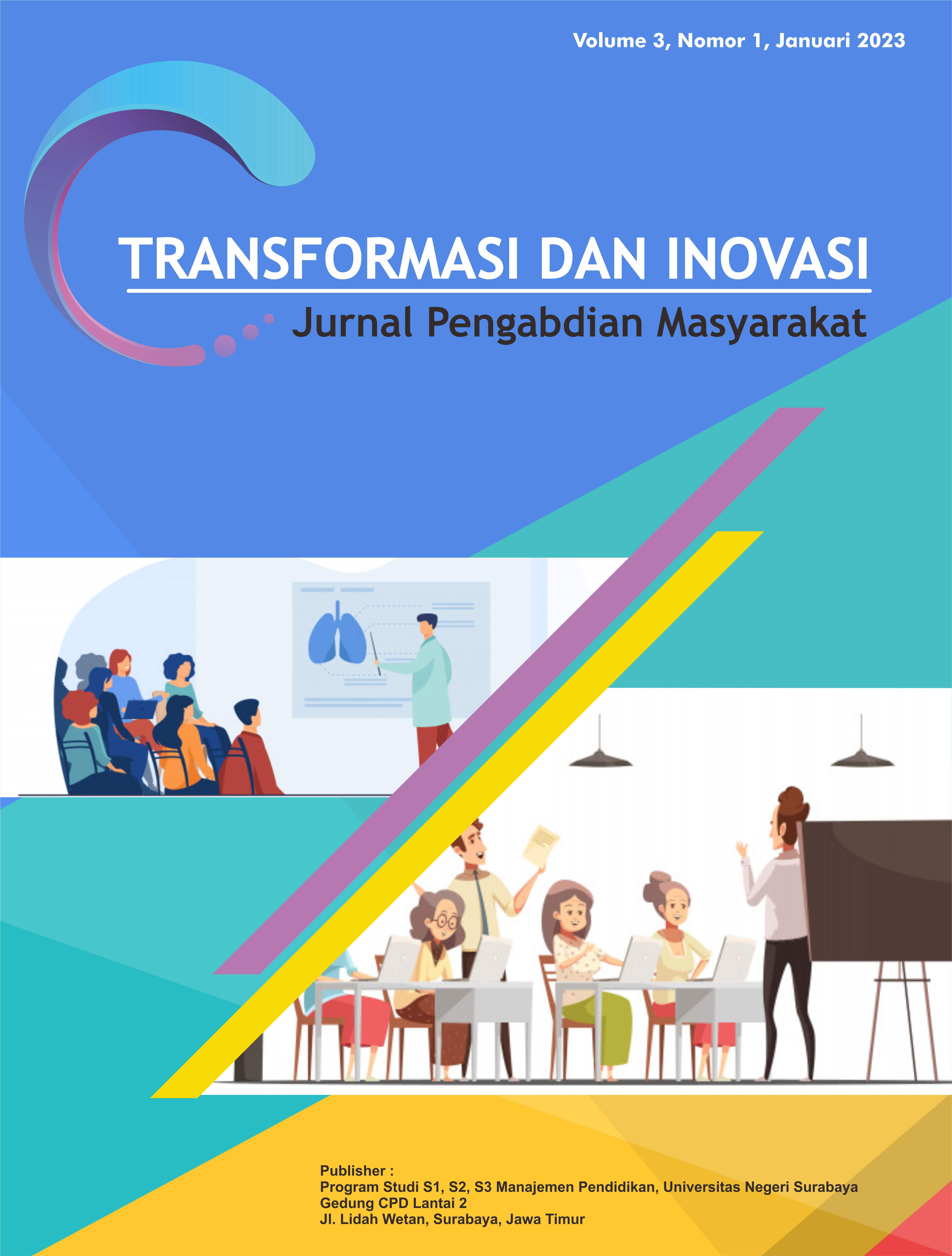The IMPLEMENTATION OF EARLY DETECTION OF DEVELOPMENT BARRIERS IN STUDENTS KB – BANGKALAN DEVELOPMENT STATE TK
DOI:
https://doi.org/10.26740/jpm.v3n1.p30-34Abstract
Detection of growth and development in children, especially those who are still at an early age, is very important to do to identify if there is a delay or developmental abnormality in children. Children who are identified as having developmental barriers or who are known as children with special needs certainly need a special form of handling or treatment that can help them develop optimally according to their abilities. The phenomenon that often occurs is that parents experience delays in knowing that their children are classified as children with special needs so the treatment given is quite late. For most people, it is not easy to know that a child is said to be or is categorized as a child with special needs. This is an obstacle and obstacle experienced by the TK Negeri Pembina Bangkalan Regency. So far, because there has been no detection or screening of child development, it has made it difficult for teachers to apply mentoring patterns to children. Therefore, it is necessary to have early detection or psychological examination to find out and ensure barriers to child development, so of course, children can also get appropriate treatment according to their needs. The aim is to help parents or guardians of children to find out the special needs of each child if they are identified as having developmental barriers. The hope is that this can help parents to be able to understand the limitations and also parents and guardians of students can provide a form of early handling of the limitations possessed by children.
Downloads
Published
Issue
Section
License
Copyright (c) 2023 Transformasi dan Inovasi : Jurnal Pengabdian Masyarakat

This work is licensed under a Creative Commons Attribution-ShareAlike 4.0 International License.
 Abstract views: 445
,
Abstract views: 445
, PDF Downloads: 1824
PDF Downloads: 1824






















